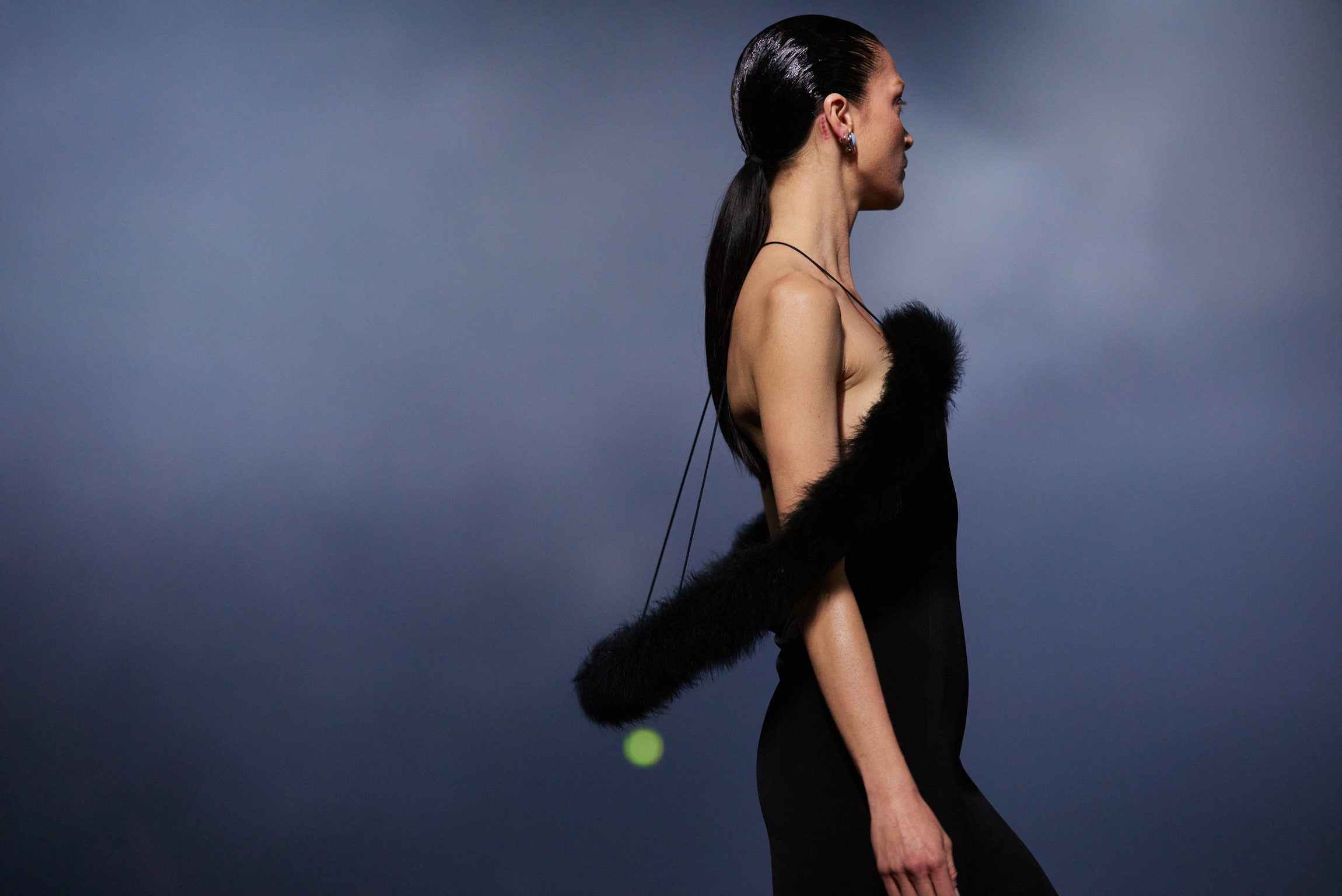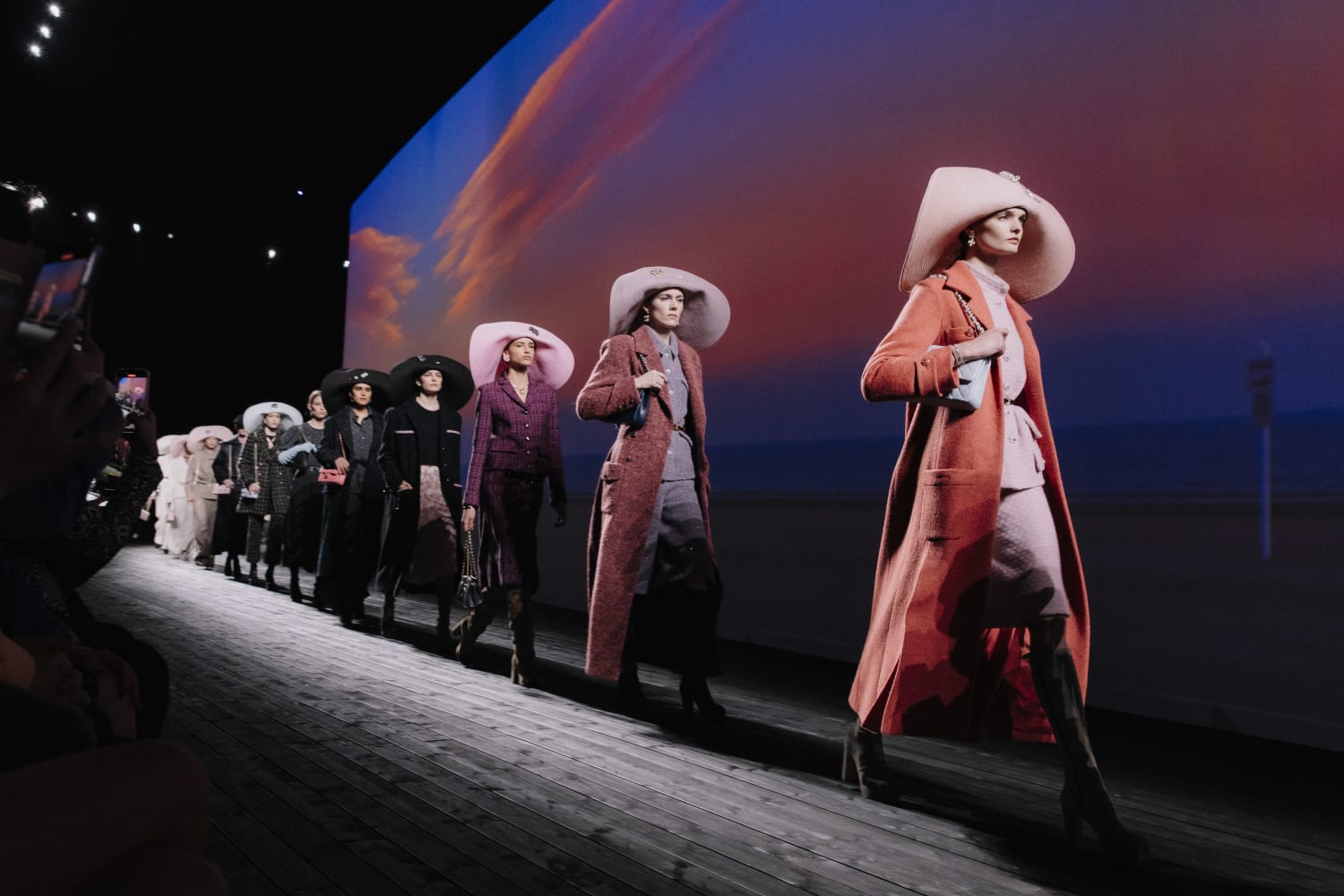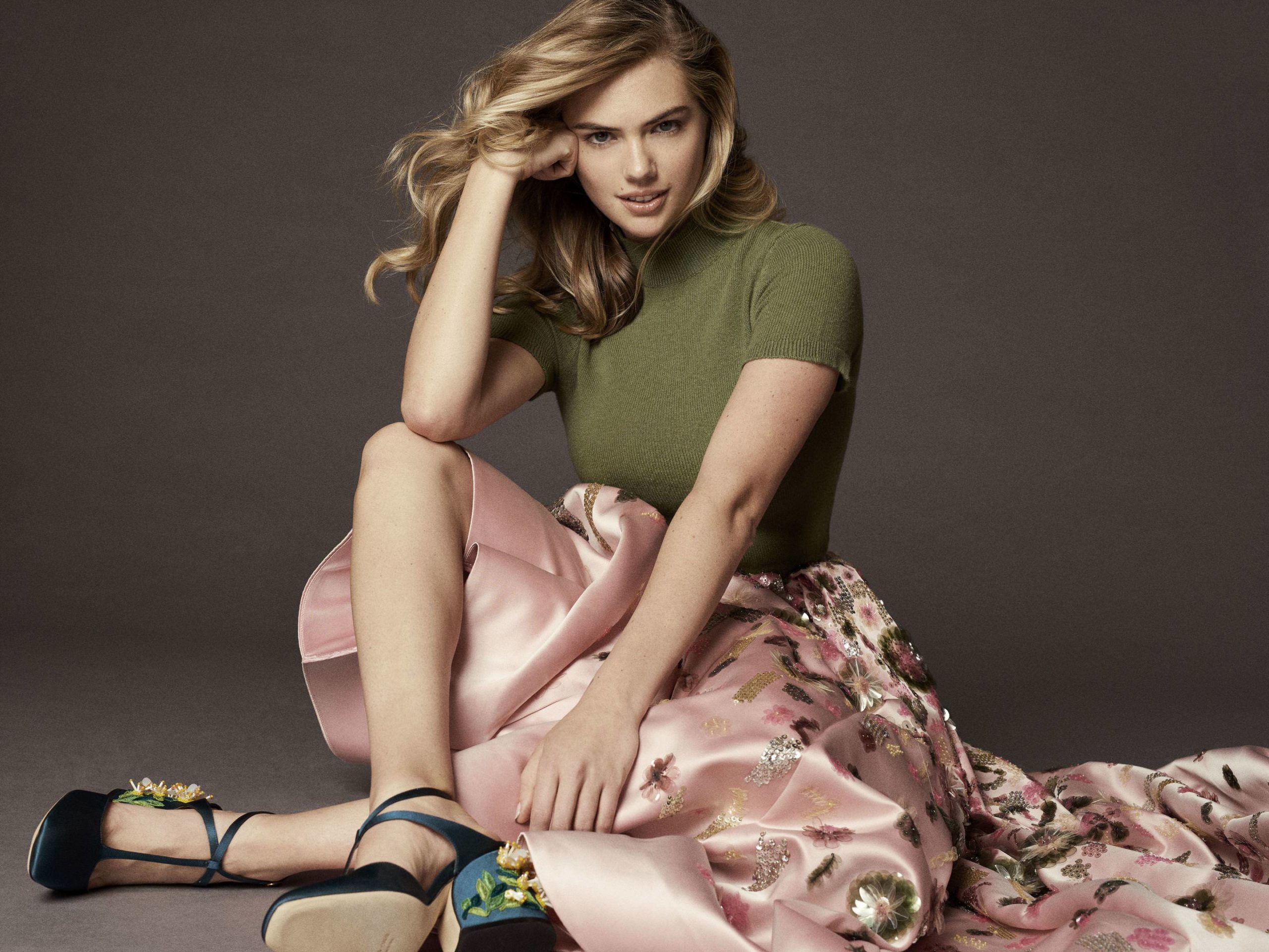In August of 2011, Liam Goslett began posting photographs he took of fashionable people on the streets of Toronto to his blog, Liam Saw This, after a mountain biking accident caused him to take a hiatus from photographing the extreme sport. Now, a year and a half later (and at the ripe age of 21), Goslett has forced himself through the white noise of street style photographers as one who deserves attention. With his photographs popping up on GQ, Four Pins, and Bergdorf Goodman Goslett’s quick-snapping eye for style has made him a familiar and welcomed face on the streets of every major fashion week.
As New York Fashion Week nears its end, we caught Goslett in one of his few moments of downtime to chat about how he went from shooting mountain biking to street style, about the importance of street style in the fashion industry, and what makes fashion week so alluring.
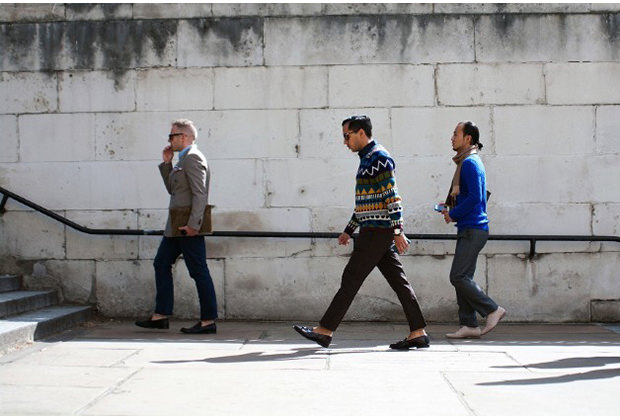
Photo by Liam Goslett
WHITEWALL: When was your first fashion week?
LIAM GOSLETT: I guess it was not last September but the September before that, so about a year and a half ago. I was maybe only about six months into fashion blogging, I just started Liam Saw This, I think there was only eight posts on it. And Tumblr emailed me asking if I wanted to go to New York; Rich Tong and Holly Stair were orchestrating the entire thing. I was just floored because when I looked at the people who were going, like How To Talk To Girls at Parties, Justin Chung, Jamie Beck, it was all these really big, really established people in the Tumblr community, and then there was me. I just hit the ground running.
WW: What is it about fashion week that keeps you coming back?
LG: It’s not just New York Fashion Week, it’s every fashion week. I love shooting street style, and for someone who does what I do, it’s the absolute best time to do it. It’s like a gift. When I shoot street style and it’s not fashion week, if you take a photo of someone they either stare at you or you have to go over and explain what you’re doing. Especially because I shoot candid mostly, I can’t stop someone beforehand. Over fashion week it’s welcomed, I can walk up to someone who is leaving a show, take 90 photos of them and they don’t think twice about it. It’s like Candyland. It’s a situation where you can do exactly what it is you love doing, and no one is going to stop you, and it’s encouraged now.
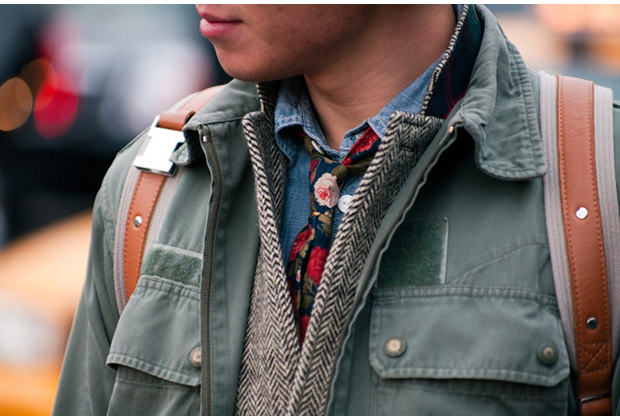
Photo by Liam Goslett
WW: It must be a rush when so many fashionable people are all in a one block radius outside someplace like Milk Studios.
LG: It certainly makes it easy. I’ve always been way more interested in shooting people in culture than actually being interested in fashion, which sounds weird because I work almost completely in fashion. For me it’s more about taking portraits and documenting. Being able to say this is what was happening during a time period. It’s great to be able to go out and do that unrestrained. Ten people walk outside a show and you can get a great shot from every single one of them.
WW: Is there anything about Fashion Week that you totally dread?
LG: Winter. I start at 8am, and I’m shooting until probably 7pm. Of those 11 hours, I’ll probably be outside for nine of them, freezing. Then I’ll come home and edit for five or six hours. If there’s six hours of shows, we work for 12 hours at least. You have to be early for all the shows, you have to get to each place, and then you go home and edit. You have to send selects before you go to sleep. We don’t go to the crazy parties and drink, we have to go home and work. It’s not as glamorous and glitzy as people think it is, you take the good with the bad. I love taking photos, and that’s just the other side of it.
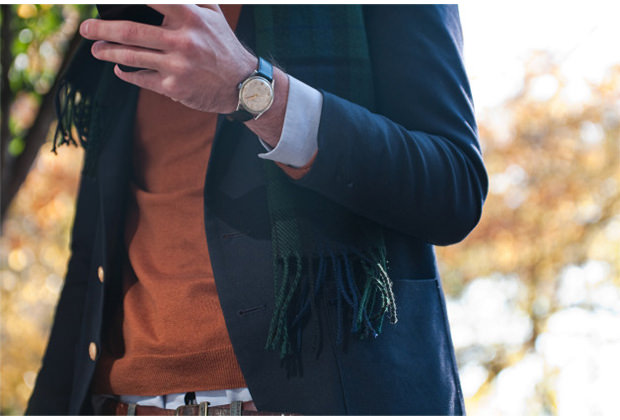
Photo by Liam Goslett
WW: Do you have any sort of routine to get you ready for Fashion Week?
LG: I usually will take all my cameras and get them oiled and recalibrated, and taken apart and put back together just so there’s not any surprises when I show up.
WW: Why do you think street style is important to the fashion industry?
LG: When street style started it served a purpose; this is what people are wearing right now, and this is how people are dressing in this moment. It was a real, true, honest documentation of fashion. It wasn’t dressed up or masqueraded. It wasn’t forced, it was organic. It was a time capsule. Bill Cunningham has been doing that for probably 40 years now, and before him Robert Frank did The Americans. It’s important because you can look back to the 1960s and say this is what was going on in culture and this is how people dressed.
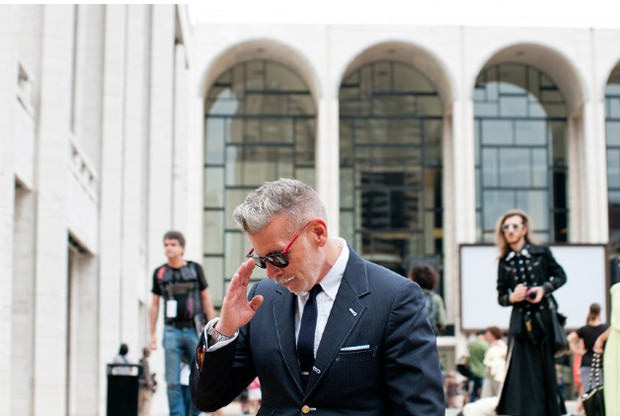
Photo by Liam Goslett
Now the meaning has changed, you have people who just go to the fashion show to be documented. But it’s also so much more in editorial and in magazines. There’s websites that won’t publish photos of inside the shows, but will only publish what’s going on outside of it, which puts a mask over the original idea.
WW: The act of capturing street style is actually, as you just mentioned, not all that new. Why now do you think it has gained so much momentum as such a phenomenon?
LG: The Internet. Publications were not doing more than a two to three page spread on street style. It’s just not what you want to devote magazine space to, you want to devote it to interviews and editorials. With the ability of the internet to post endlessly, now it’s made it easy to do what I do: shoot for a day, turn over the photos, and have them posted on the internet the next morning. It’s so much easier to get your work out there, more so than if you were with a proper published magazine 15 or 20 years ago when you had to wait a month.
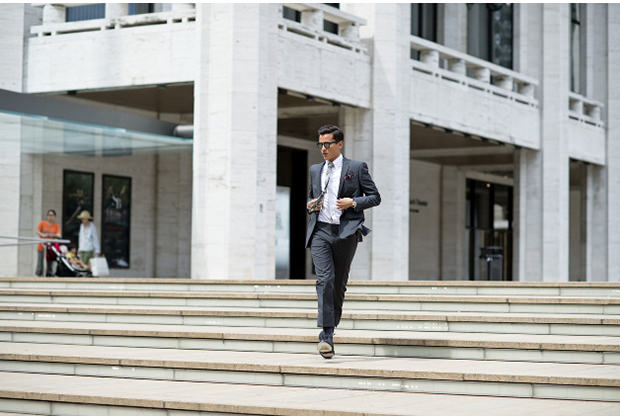
Photo by Liam Goslett
WW: If street style is so regurgitated these days, what about it keeps you going? Why not do editorial?
LG: I love doing editorial. But when I started shooting, I was mainly shooting bikes. I used to race mountain bikes, so I started shooting so I could photograph my friends riding bikes. When I was 17, I got into a really bad bike crash in a race and couldn’t ride my bike for six months. I wasn’t able to keep shooting biking, so I started taking portraits of my friends.
Then while that was happening I had a growing interest in fashion. When I started reading street style sites, I realized you could go out and take photos of hundreds of people, and they will let you take photos of them, and they are all dressed really well. It made sense. I loved that style of photography more than anything else. When I started seeing Nam and Tommy and the portraits they get, they are so incredibly timeless. Having the ability to do that, it was more alluring to me than any other style of photography.
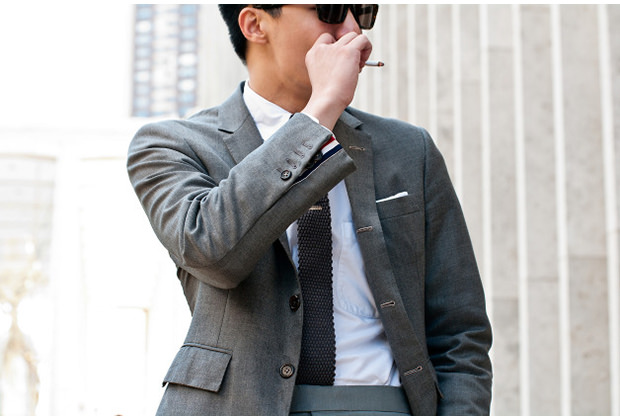
Photo by Liam Goslett
WW: Where do you see street style going?
LG: I think it depends on the photographer. In 50 years, we can look back and say that’s still a great photo, that’s important. But the idea of street style completely depends on how saturated the market becomes and I’m sure right now we’re in a bubble. In almost every editorial, people want to see a street style “look.”
WW: Do you think the bubble has burst though?
LG: I think it’s about to, I think it’s very close. Just like any other style of editorial in any other period of fashion, people are going to get bored of it. Someone is going to come along and do something different and then it’s going to be all we want. It’s just the new thing.
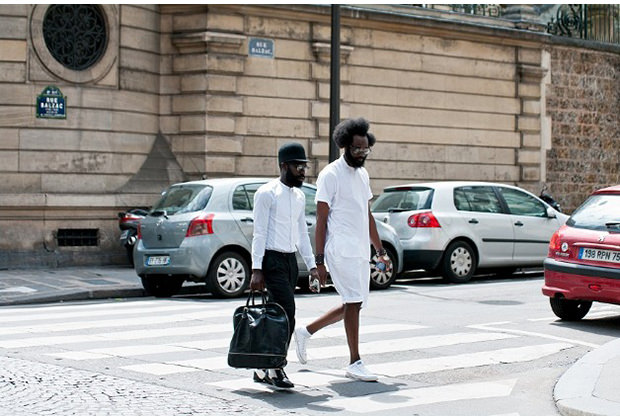
Photo by Liam Goslett
I think from a photography perspective, the guys who really love it aren’t going to stop doing it. There are still going to be fashion weeks and there are still going to be people to photograph. They got into to it because they love it and it’s a pretty grueling job. You travel for two months straight without going home and sleep three or four hours a night, you really put yourself through shit, and you do it because you love every second of when you’re shooting. The ones who go to one or two shows and say “I’m a street style photographer” those are ones who won’t continue. As soon as a new trend hits, they’ll be gone.
Liam Goslett is the founder and photographer behind blogs such as Liam Saw This and GAWS. As a prominent fixture on street style scene, you can find him lurking outside fashion shows, searching for the perfect shot. Liam has worked with such fashion notables as GQ, Puma, Bergdorf Goodman, GILT, Complex, and Four-Pins, as well as a handful of other great people. Hailing from Toronto, his drink of choice is grapefruit juice, and you can follow him on Twitter here.

Photo by Liam Goslett





